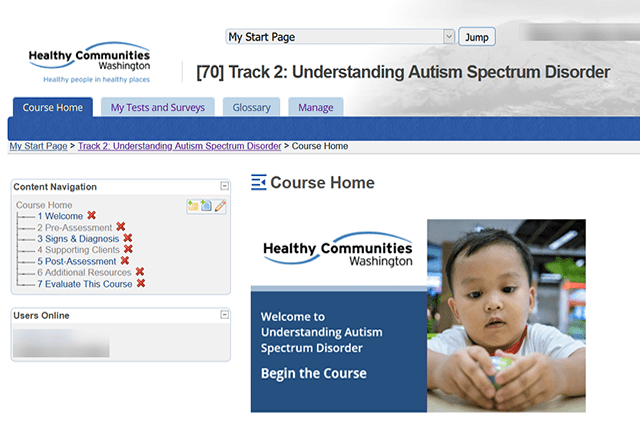Translating courses can be deceptively tricky. It’s not just about word-for-word accuracy. Cultural nuances and learning styles can create hidden pitfalls. These pitfalls can lead to learners feeling confused, disengaged, or even offended.
That’s why Talance has historically put an emphasis on avoiding communication breakdowns caused by language barriers, such as in, “How To Offer Virtual Courses in Spanish and Other Languages.”
And with years of experience under our belt, we’ve encountered a wide range of course translation pitfalls. One recent challenge involved cultural idioms and expressions. These can be tricky to translate literally, as their meaning might not translate directly.
Take, for example, the common English saying “break a leg.” This wouldn’t translate well in some cultures where it might be considered bad luck to wish someone to break a bone.
Just like that, seemingly straightforward phrases can create confusion for learners. We’ll delve deeper into navigating these challenges in the next section.
However, even with the best intentions, common pitfalls can arise. You’ve probably heard a coworker volunteer to help with translation, but there are many reasons why you’ll be better off working with experienced translators and course developers. Ahead, we’ll explore five of the most common errors you may encounter when translating a course into a foreign language.
Course Translation Best Practices
While translating courses might seem like a straightforward task, creating a truly effective training experience for your target audience requires careful planning and execution. Here are some best practices you can follow so your courses have great learning outcomes no matter what the language:
Prioritize Cultural Nuance
Direct word-for-word translations can often miss the mark. Understanding the cultural context of your course content is important. This includes adapting humor, idioms, and references to click with your learners. Imagine translating a course on customer service; a phrase like “go the extra mile” might need a culturally relevant equivalent to convey the same level of effort.
Embrace Collaboration
Subject matter expertise combined with language fluency is a powerful force. Partner with experienced translators who not only understand the target language but also possess knowledge of the course topic. This way, you know your course has technical accuracy and also clear communication of learning objectives.
Leverage Technology
Don’t underestimate the power of technology tools. Learning management systems (LMS), such as Talance’s, can often handle multilingual content, making delivery and updates seamless.
5 Common Course Translation Errors To Avoid
False Friends
Put simply, false friends are words or phrases in different languages that sound similar enough that some people might assume they share the same meaning, but they don’t. Some examples include:
- Magasin, which means shop or store in French, and magazine in English.
- Enkel, which means grandchild in German, and ankle in English.
- Once, which means eleven in Spanish, and once in English.
Localization
Do you prefer gray or grey? Would you buy a pop or a soda?
Just like there are regional accents and dialects in English, Spanish and other languages also have these differences, sometimes to the point of drastically changing the meaning of words or becoming offensive, depending on the location.
Localization is an essential consideration to make as part of your course translation project, as Latin American Spanish is vastly different from the one spoken in Spain. And even within Latin America, you will find differences between Mexico and Colombia, just to name a few.
Cultural Relevance
Related to localization, you will find that some parts of your course need to change based on the target audience you’re translating for. In course translation, this is known as cultural relevance, and it is essential for creating context in your translated course.
We recently had a difficulty regarding cultural relevance happen in one of our courses. The original course was in English and linked to online training provided by the Red Cross. Early on, we learned that the Red Cross doesn’t have an online curriculum in the language we were translating for. So we had to find a similar enough course curriculum and present it to the client for approval.
You will need to find content equivalents in the target language as well as local resources that align with your audience’s needs effectively. And these may not be what you’re thinking of. You may find yourself searching for recipes, local programs or initiatives, and even other resources like religious or spiritual services to supplement your learners’ needs.
Consistency
In English, we say You. Pretty simple. But other languages are not quite as straightforward when it comes to pronouns. In French, for example, there are formal and informal ways to address people. Tu and vous mean you.
The former is casual, and you’d use it to speak with friends. On the flip side, the latter is formal and used to address an instructor or supervisor. Spanish works similarly, with tú and usted, which also change the way the verb behaves in a sentence.
These nuances may seem small — almost insignificant. But in reality, they signal to the native speaker that you took the time during the translation phase to create a thoughtful course in their language, enhancing the learning experience.
Another aspect of consistency is using the same word throughout the text when translating a specific term. In many cases, especially when working in teams, translators create a glossary to track the preferred word choice and spelling to keep the text consistent throughout the entirety of the content.
Platform Language Capabilities
The final piece of the course translation puzzle is the platform’s ability to integrate another language to create a cohesive experience for the learner. This is one of the main features you’ll need to keep in mind when choosing or developing a learning management system, as there may be substantial costs to add this feature later on — if it’s even possible.
Final Words
Course translation, and translation in general, is an art — and a science. To increase your chances of success in any professional training program, work with experts that can guarantee the most relevant, high-quality translation that will give your learners the tools they need to uplevel their skills in their native language.
At Talance, we work with agencies like yours to develop customized training programs in your team’s native language. Our team is made up of worldwide talent to secure the highest quality standards. Book a consultation now to learn more about what we can do for you.



